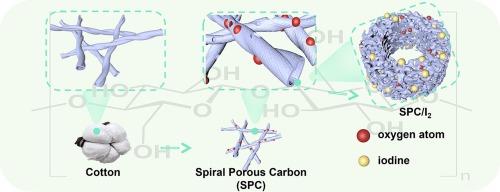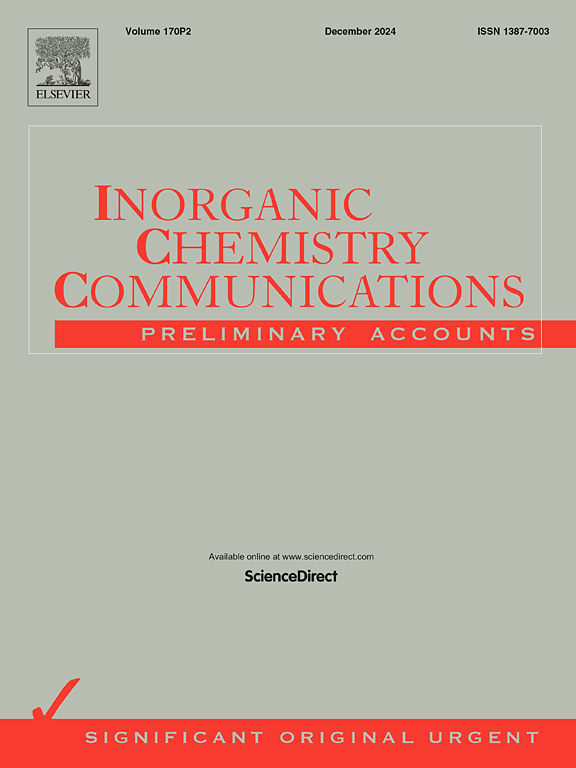Green synthesis of renewable biomass-derived porous carbon hosts for superior aqueous zinc-iodine batteries
IF 4.4
3区 化学
Q1 CHEMISTRY, INORGANIC & NUCLEAR
引用次数: 0
Abstract
Natural biomass-derived carbon materials, renowned for their inherent porosity and distinctive structural attributes, have become the focus of extensive research and application. The incorporation of heteroatom doping further amplifies their appeal due to the inherent advantages it confers. A hierarchical porous carbon framework derived from biomass was synthesized by direct carbonization of cotton. The strategic optimization of the synthesis parameters during thermochemical treatment to preserve the inherent tubular fiber structure of cotton and regulate the pore structure to effectively mitigate the inherent shuttle effect of zinc-iodine batteries (ZIBs). The electrochemical performance of the synthesized cathode material is impressive. The SPC750-2/I2 (spiral porous carbon) electrode exhibits robust performance with 88 % capacity retention after 10,000 cycles at a current density of 2 A/g. This durability and stability at a high current density suggests that the material has potential for high-performance energy storage applications and is important for the sustainable utilization of low-cost, excess biomass.

绿色合成可再生生物质多孔碳宿主,用于制造优质水性锌碘电池
天然生物质衍生碳材料以其固有的多孔性和独特的结构属性而闻名,已成为广泛研究和应用的焦点。由于其固有的优势,杂原子掺杂的加入进一步增强了它们的吸引力。通过对棉花进行直接碳化,合成了一种源自生物质的分层多孔碳框架。在热化学处理过程中对合成参数进行了战略性优化,以保留棉花固有的管状纤维结构并调节孔隙结构,从而有效缓解锌碘电池(ZIB)固有的穿梭效应。合成阴极材料的电化学性能令人印象深刻。SPC750-2/I2 (螺旋多孔碳)电极表现出强劲的性能,在电流密度为 2 A/g 的条件下,经过 10,000 次循环后,容量保持率为 88%。这种在高电流密度下的耐久性和稳定性表明,这种材料具有高性能储能应用的潜力,对于低成本、过剩生物质的可持续利用非常重要。
本文章由计算机程序翻译,如有差异,请以英文原文为准。
求助全文
约1分钟内获得全文
求助全文
来源期刊

Inorganic Chemistry Communications
化学-无机化学与核化学
CiteScore
5.50
自引率
7.90%
发文量
1013
审稿时长
53 days
期刊介绍:
Launched in January 1998, Inorganic Chemistry Communications is an international journal dedicated to the rapid publication of short communications in the major areas of inorganic, organometallic and supramolecular chemistry. Topics include synthetic and reaction chemistry, kinetics and mechanisms of reactions, bioinorganic chemistry, photochemistry and the use of metal and organometallic compounds in stoichiometric and catalytic synthesis or organic compounds.
 求助内容:
求助内容: 应助结果提醒方式:
应助结果提醒方式:


